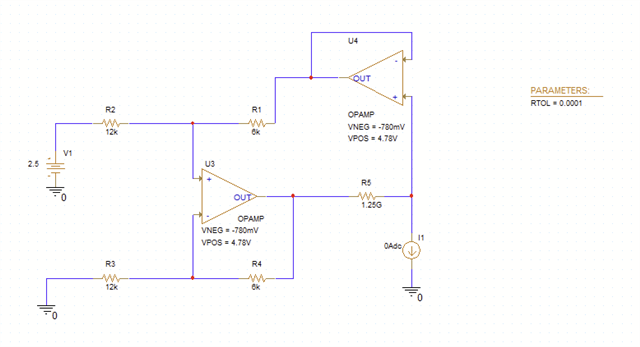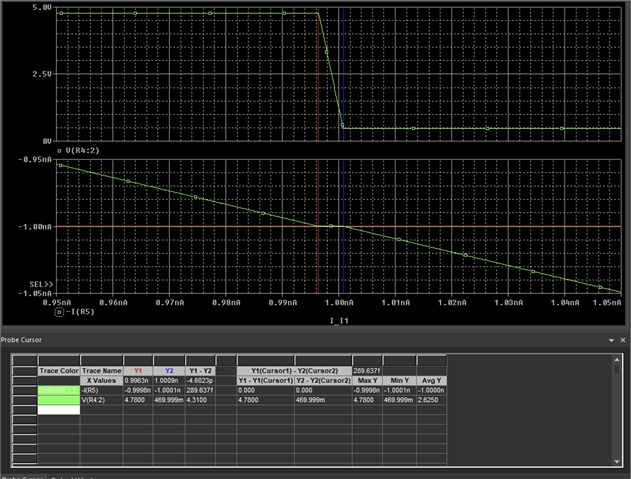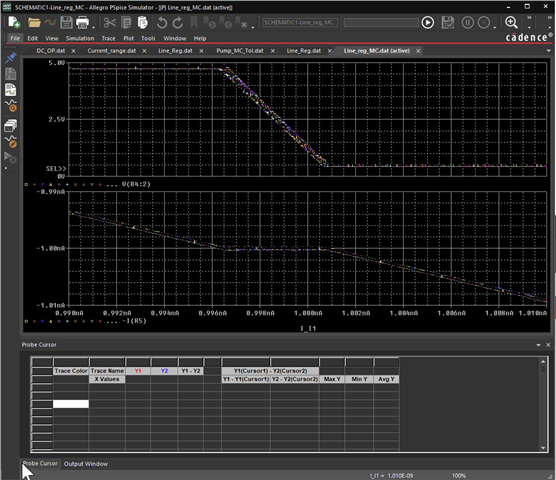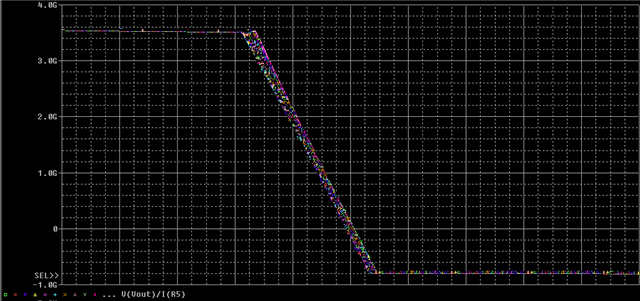Tool/software:
Hello,
I'm working on modifying a 9V battery-powered handheld DC current source that needs to be able to source +1nA-500uA with <1% error. Temperature range is from 65-75 degF (18-24 degC). The circuit is similar to the buffered Howland current pump shown in Figure 9 of TI AN-1515; see below for actual circuit configured for 1nA. An INA592 was used to provide a precision resistor network for the Howland core and a gain <1, allowing for smaller Rs values. A trimmer is integrated into Rs for hand-tuning.
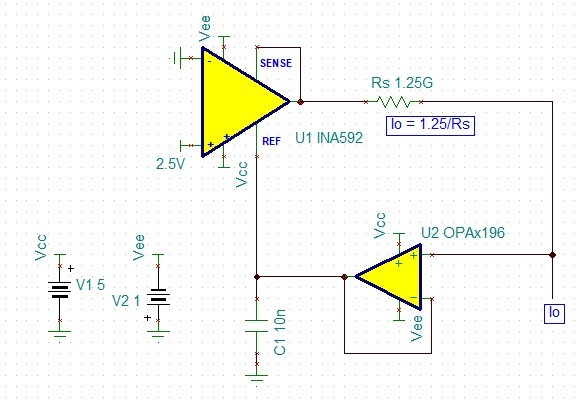
A few questions about this method:
Do I need to upgrade either of the ICs to work in the nA range? I figure an IC similar to the INA592 but with lower gain could allow for an even lower Rs value and get away from temperature-sensitive GΩ resistors. Perhaps using resistance multiplication like that seen in Figure 11 of TI AN-241 could get around this problem too.
What opamp parameters should I optimize to get best DC accuracy and stability? Also, how can I compute the range of load impedance compliance? Are guard ring PCB techniques necessary for 1nA?
Thanks for your help.


